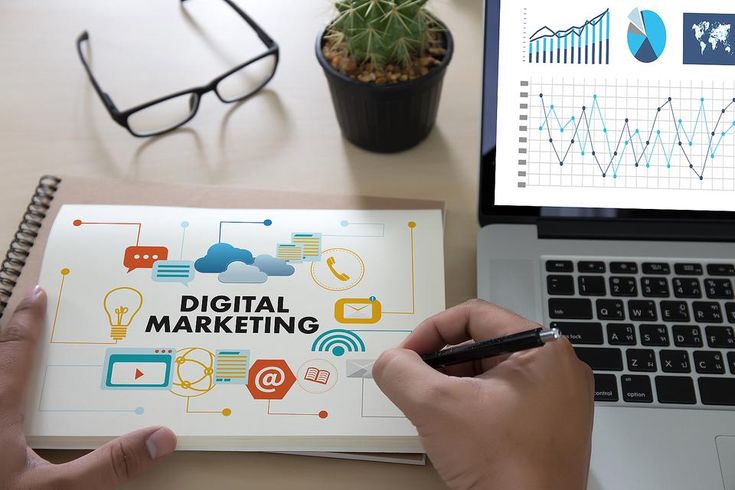In today’s digital world, businesses rely on digital marketing to reach their target audience, boost sales, and grow their brand. But digital marketing is a broad field with many strategies. Whether you’re a business owner, a marketer, or just curious, understanding the different types of digital marketing can help you choose the right approach.
1. Search Engine Optimization (SEO)
SEO is the process of optimizing a website to rank higher on Google, Bing, or Yahoo search results. The goal is to increase organic (unpaid) traffic by improving website visibility.
Key Aspects of SEO:
✔ On-Page SEO: Optimizing website content, keywords, and meta descriptions.
✔ Off-Page SEO: Building backlinks and improving website authority.
✔ Technical SEO: Enhancing site speed, mobile-friendliness, and security.
👉 Example: When you search for “best smartphones,” the top results appear due to strong SEO strategies.
2. Pay-Per-Click Advertising (PPC)
PPC is a paid advertising model where businesses pay for each click on their ad. Platforms like Google Ads and Facebook Ads display these ads to a targeted audience.
Benefits of PPC:
✔ Instant traffic to websites
✔ Measurable ROI (Return on Investment)
✔ Audience targeting based on demographics and interests
👉 Example: A shoe brand runs Google Ads for “best running shoes,” appearing at the top of search results.
3. Social Media Marketing (SMM)
SMM involves promoting brands on platforms like Facebook, Instagram, LinkedIn, Twitter, and TikTok to engage with customers and build brand awareness.
Popular Social Media Strategies:
✔ Organic Marketing: Posting engaging content, reels, and stories.
✔ Paid Advertising: Running sponsored ads for a wider reach.
✔ Influencer Marketing: Collaborating with social media influencers.
👉 Example: A fashion brand collaborates with Instagram influencers to showcase their new collection.
4. Content Marketing
Content marketing focuses on creating valuable, relevant, and engaging content to attract and retain customers. It helps businesses build trust and authority in their industry.
Types of Content Marketing:
✔ Blog Posts & Articles – Informative and SEO-friendly content
✔ Videos – YouTube tutorials, product reviews, and live streams
✔ Infographics – Visually appealing content to simplify data
✔ E-books & Whitepapers – In-depth guides for lead generation
👉 Example: A fitness website publishes workout guides and diet tips to attract health-conscious audiences.
5. Email Marketing
Email marketing involves sending promotional messages, newsletters, and product updates to a list of subscribers. It helps businesses maintain customer relationships and increase conversions.
Best Email Marketing Practices:
✔ Personalization (using the recipient’s name)
✔ Clear subject lines and CTAs (Call-to-Action)
✔ Automated follow-ups and segmentation
👉 Example: An e-commerce store sends discount coupons via email to previous customers.
6. Affiliate Marketing
In affiliate marketing, businesses partner with affiliates who promote their products in exchange for a commission on each sale generated through their referral link.
Affiliate Marketing Platforms:
✔ Amazon Associates
✔ ClickBank
✔ ShareASale
👉 Example: A tech blogger writes a review of a laptop and shares an affiliate link for readers to purchase it.
7. Influencer Marketing
Influencer marketing involves partnering with social media influencers, YouTubers, or bloggers to promote products or services.
Types of Influencers:
✔ Mega-Influencers – Celebrities with millions of followers
✔ Micro-Influencers – Niche influencers with a smaller, loyal audience
✔ Nano-Influencers – Everyday users with engaged communities
👉 Example: A beauty brand collaborates with a YouTube influencer to review their new makeup line.
8. Video Marketing
Video marketing uses platforms like YouTube, TikTok, and Instagram Reels to engage audiences with visual content.
Popular Video Content:
✔ Product demos and tutorials
✔ Customer testimonials
✔ Live Q&A sessions
👉 Example: A tech company releases a YouTube product demo to showcase its latest smartphone.
9. Mobile Marketing
Mobile marketing focuses on reaching users through SMS, mobile apps, and push notifications. With more people using smartphones, this strategy is essential.
Mobile Marketing Strategies:
✔ SMS promotions and alerts
✔ App-based marketing (in-app ads)
✔ Location-based advertising
👉 Example: A food delivery app sends push notifications with discount offers to users nearby.
10. Online Reputation Management (ORM)
ORM involves monitoring and improving a brand’s online presence by managing customer reviews and feedback.
How ORM Works:
✔ Responding to positive and negative reviews
✔ Encouraging satisfied customers to leave feedback
✔ Addressing complaints and maintaining brand trust
👉 Example: A restaurant actively replies to customer reviews on Google My Business to build credibility.

